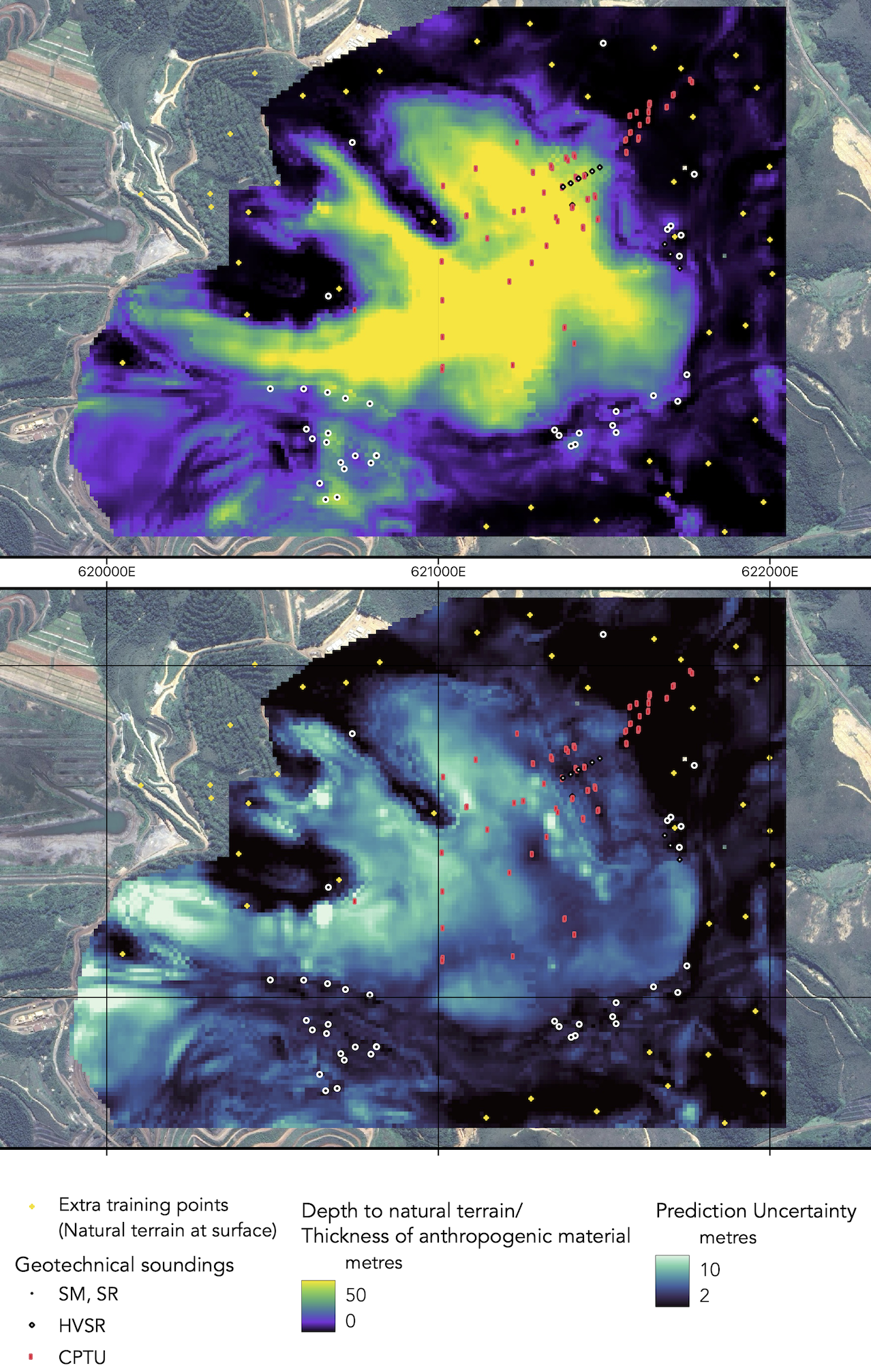Customer story: Assessing the internal structure of a Tailings Storage Facility
Integrated ground modelling for VALE Brazil, focusing on a tailings storage facility to enhance safety and minimise risks in mining operations.

Background
The safety of tailings storage facilities is arguably one of the most important responsibilities of mining operators to ensure a sustainable extraction of critical raw materials. As the largest mining company in South America, Vale S.A. aims at exceeding the state of practice in geoscience to maximize safety and minimize risk.
In 2025, EMerald Geomodelling carried out a Proof of Concept (PoC) to improve ground models at one of Vale's tailings storage facilities using machine learning techniques to integrate existing geophysical data combined with geological and geotechnical data from drillings including tactile-visual material descriptions and numerical parameters. EMerald produced geological models that delimit interfaces between different tailings materials and lithologies and provide information on the associated geological uncertainties.

How it was done
This PoC incorporated the most diverse combination of data types used in a ground modelling project in EMerald’s history to date. Geophysical, geotechnical and geological investigations were integrated into EMerald’s machine learning algorithms to better utilize all the information available in the structure. In addition to helicopter geoscanning data, geophysical data from terrestrial methods including ERT, MASW and HVSR, together with (S)CPTUs, vane test, SPTs, rotary drillings and hydrogeological data (hydrogeological model and raw instrumentation data) were incorporated into the algorithm to develop models with greater detail and reliability.
Deliveries to the customer
This study employed two modeling workflows. The interface modelling was used to predict the depth of key geological boundaries: bottom of soft soil, phreatic surface (water table), bottom of tailings deposits, natural terrain (i.e., bottom of anthropogenic material), and bottom of residual soil.

The second workflow performed volumetric classification, where predictions were performed to produce models for grain size (fine, transitional, coarse) using the CPTU-derived Soil Behavior Type Index (Ic), and for contractive versus dilative behavior.
.png)
Customer results and actions taken
Critical parameters for safe tailings management are their volume and topographic placement in the former natural terrain. Older tailings facilities such as in the presented case, do not always have a complete record of historical data and assumptions must be made that lead to increased uncertainty. The new holistic model of pre-tailings natural ground gave Vale highly valuable insights that did not exist in such accuracy prior to the PoC.
With the positive outcome of the project, work is now underway to start applying the EMerald GeomodellingTM workflow on additional tailings storage facilities to decrease risk and contribute to responsible management of these assets.
“By providing uncertainty estimates and probabilistic outputs, the models provide a more robust foundation for risk-informed engineering decision making” Fernanda Matarazo, Geotechnical Projects, Vale S.A Brazil

